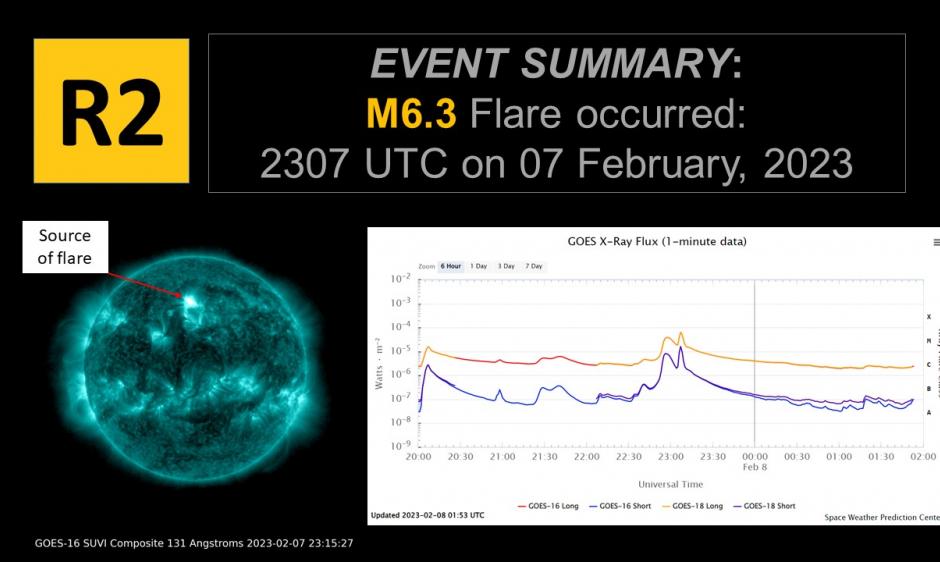
Region 3213 becomes more active, producing M6.3 flare
Active Region (AR) 3213 rapidly emerged on the visible disk on 06 Feb as just a few sunspots but has since grown into a mature, magnetically-complex sunspot group. While fewer spots were observed today (08 Feb) than yesterday, this AR produced a double-peaked flare beginning at 07 Feb/2246 UTC, peaking at M6.3 at 07/2307 UTC.
Flares of this magnitude are capable of producing high frequency communication blackouts on the sunlit side of Earth. Frequencies were forecast to be most degraded over central Pacific waters at the time of the flare.